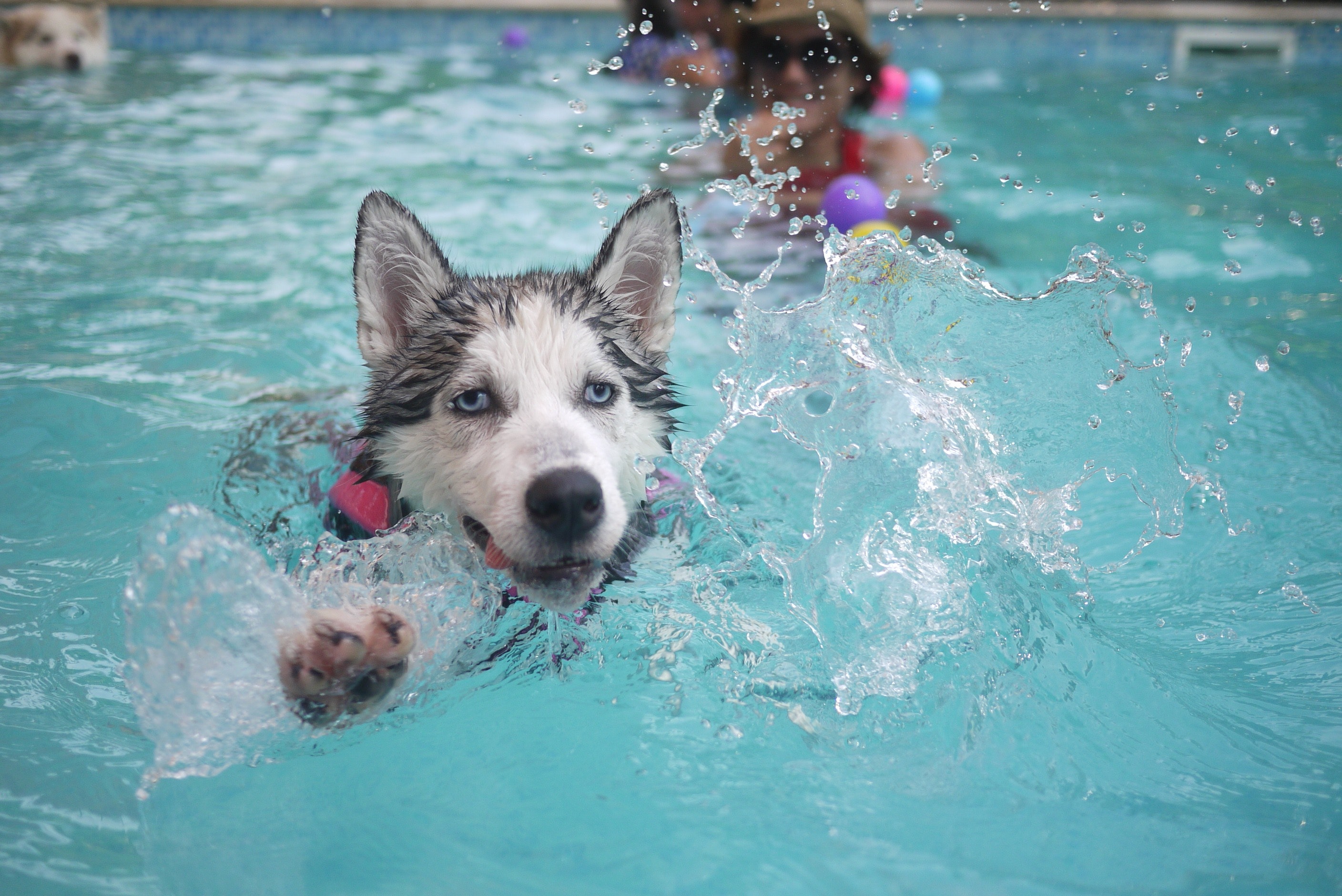Hydrotherapy for dogs is still a relatively new concept in India but it is catching on. What is hydrotherapy? In Greek, ‘hydrotherapy’ means ‘water healing’ and well, that’s what it really boils down to. The most common form of hydrotherapy is where dogs are prescribed swimming schedules according to their health issues. Here, they are taught to swim by professional instructors and will swim laps for a prescribed period of time. You may wonder why they are taught to swim. The question arises – don’t all dogs know how to swim? And the answer is no. Our city dogs are not exposed to ponds, lakes or beaches. So swimming doesn’t come naturally to most of them. Many are even scared of water. Hence, when they are introduced to hydrotherapy, they are eased into swimming gently and slowly. Most dogs take to it quite fast but that doesn’t mean all dogs will like it!
You even have underwater treadmills that can be used by dogs. An underwater treadmill includes a treadmill in a tank of water or a pool. The tank is filled up to the level required for an individual pet’s needs. The underwater treadmill provides resilience while the dog walks, easing the pressure on painful limbs and joints.
Says Dr. Aravind Kumar of The Ark, Chennai, “The primary intention of hydrotherapy is physiotherapy, muscle strengthening and toning, obesity management and maintaining normal functioning of joints. It is a form of activity and exercise for a dog.” With the summer heat blazing down, one wonders whether the occasional swimming session could be recommended for one’s furry pet. Dr.Aravind rules that out. He agrees, “It is an option for heat management but bringing the dog for a swim and taking it back negates the purpose. It is a huge hassle and exposes the animal to more heat unless the pool is close by.”
But more than that, hydrotherapy is not suitable for all dogs. Dr.Aravind cautions, “If a dog has underlying cardiac or health issues, it needs to be screened. If a dog who has health issues or has never swum and is made to do so, he says, “It’s like someone doing a 100-meter sprint without training or a person trying to swim in the sea without knowing how to swim. It can be fatal. Hydrotherapy is as technical as physiotherapy. We need to check if it suits a particular dog. It is not a solution for all. We need to screen the patient.”
In an article in www.dogster.com, it says, “Hydrotherapy uses the properties of water — buoyancy, viscosity, resistance, and hydrostatic pressure — to enable a dog (or human) to move her joints. Water makes the body buoyant, so when submerged, the weight of the body is supported. This means the dog is not fighting gravity. The buoyancy of water reduces stress on the joints and this creates a much safer environment for recovery after surgery.” Hydrotherapy is very useful for dogs suffering from arthritis, hip dysplasia and is therapeutic for dogs who have undergone surgery.
In canine arthritis, just like in humans, the joints are affected, and dogs suffer a lot of pain. As a result, the dog is reluctant to walk, and the muscles become weak. Over time, the dog is unable to get up. “This is a combination of bad joints and weak muscles,” says Dr.Aravind. “Hydrotherapy ensures that the muscles don’t weaken.”
He says, “For arthritic dogs making them walk is not advisable. The wear and tear of joints translate to pain and discomfort. Hydrotherapy exercises the muscles without putting any strain on the joint.” However, he cautions, “Hydrotherapy will yield best results only with consistency.”
Also remember, there are some dogs who just will not take to hydrotherapy. I can give the example of my black Labrador Retriever, Hotdog. For some reason unknown to us, he HATED swimming. I have a video where I taped his first swimming session. He didn’t move an inch! All he did was move his eyes to follow my movements while he was in the pool, held by the instructor. I persisted because he is severely arthritic. Over time, he began to swim but each and every time, he had to be literally dragged into the pool! And then, my clever dog mastered the art of floating. So, he would float in the pool very calmly, not using his legs. Which defeated the very purpose of hydrotherapy – which was to make him use his legs to strengthen the muscles. Hydrotherapy sessions don’t come cheap, and I had to travel quite a distance to take him for these sessions, which would take an hour at least. Finally, I stopped because I knew I was beaten!
If your dog has arthritis, hip dysplasia or other joint-related conditions, you could consider hydrotherapy. It does improve the dog’s mobility substantially. When Hotdog was swimming (before he mastered the art of floating!) I could observe a discernible improvement in his walking. However, please check with your vet. It is not for you to decide, it is for your vet to determine depending on your dog’s health and any underlying conditions. Also, ensure that the place you take your dog to for hydrotherapy sessions has qualified personnel to teach your dog to swim and also to handle any emergency. Never leave your dog unattended in the pool.
As I said earlier, hydrotherapy doesn’t come cheap, but it can improve your dog’s mobility significantly. And for dogs who love to swim, like my other black lab, Bonbon, it can be an enjoyable form of exercise!















